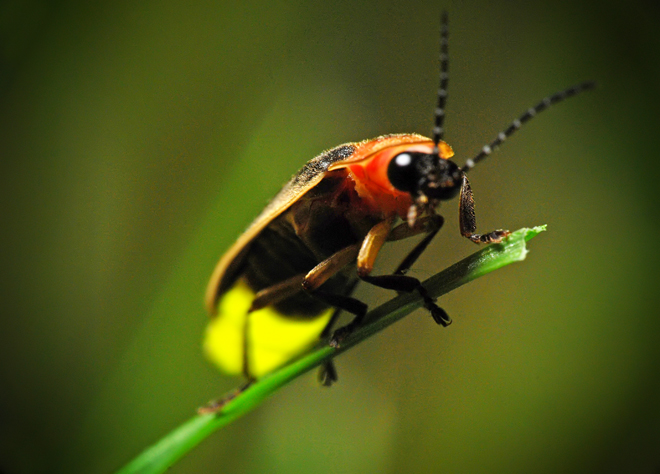Team:Cambridge/Bioluminescence
From 2010.igem.org

Project Firefly was dedicated to constructing BioBricks from genes involved in the light producing pathways found in fireflies.
Fireflies are some of the best known insects from the family of click beetles. They have a light-emitting organ known as the lantern in their abdomen. The fireflies use their lantern in courtship displays, the flashing of a female's lantern attracts a male to her. However since larvae also glow the light is also thought to be an aposematic signal, advising predators of the beetle's bitter taste.
Our work
We have exploited a number of enzymes required for firefly bioluminescence:
- The luciferase (light emitting enzyme) from the North American firefly, Photinus pyralis with three mutations to increase substrate affinity and thereby brightness.
- The luciferase from the Japansese firefly, Luciola cruciata for which we made a number of mutations to give 3 different colours.
- The luciferin-regenerating enzymes (LREs) from both these species. Luciferin is the substrate used by firefly luciferases to emit light. Once a photon has been emitted this luciferin is released in an inactive from known as oxyluciferin. LRE is crucial for the regeneration of luciferin from this oxyluciferin.
The luciferase from the North American firefly, P. pyralis, is a well-tested and characterised enzyme catalysing the creation of light using D-luciferin as a substrate. We were aware that a luciferase from this organism was already present in the registry ([http://partsregistry.org/Part:BBa_I712019 BBa_I712019]). In order to improve this part and to further its applicability, we pursued three different routes:
- Codon optimisation for expression in E. coli to increase the rate of translation in E.coli.
- Creating a mutant with increased substrate affinity
- Parallel use of the Photinus pyralis luciferin regenerating enzyme to both relieve inhibition by oxyluciferin and increase availability of luciferin.
The Japanese firefly, Luciola cruciata is notable in that nearby fireflies flash in synchrony, making the trees pulsate with green light, a phenomenon used by fishermen as a means of locating the shore. We selected Luciola cruciata because [http://www.ncbi.nlm.nih.gov/pubmed/1946326 Kajiyama and Nakano (1991)] had described a suite of single amino acid changes which significantly changed the wavelength of peak emission.
 "
"


